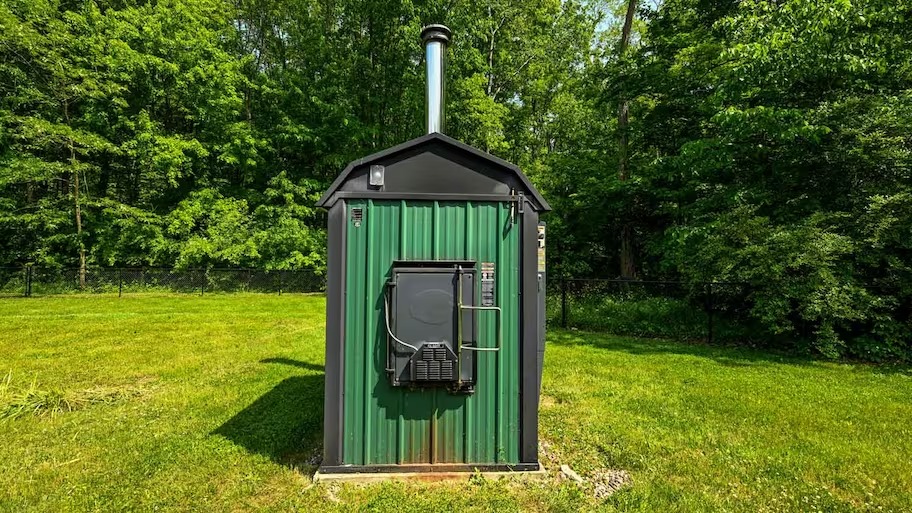Heating our homes during the cold winter months can be expensive. With rising energy costs, many homeowners are looking for alternative heating options that can help them save money.
One such option is heating with an outdoor wood stove. Not only can this method be cost-effective, but it also has several other benefits.
In this article, we will explore the cost-savings of heating with an outdoor wood stove and why it is a viable option for homeowners.
Lower energy costs
One of the main advantages of heating with an outdoor wood stove is the significant reduction in energy costs. Wood is generally cheaper than other fuel sources such as oil, gas, or electricity.
By utilizing wood as a heating fuel, homeowners can save a substantial amount of money on their utility bills. Additionally, the cost of wood tends to be more stable compared to fluctuating energy prices, providing homeowners with greater control over their heating expenses.
Another advantage of heating with an outdoor wood stove is the environmental benefits. Wood is a renewable resource and burning it for heat produces fewer greenhouse gas emissions compared to fossil fuels.
This means that using wood as a heating fuel can help reduce carbon footprints and contribute to a more sustainable future. Furthermore, burning wood also helps to reduce dependence on non-renewable energy sources, making it a more environmentally friendly option.
In addition to cost savings and environmental benefits, heating with an outdoor wood stove also provides a sense of self-sufficiency. Homeowners have the ability to gather their own firewood, giving them a greater sense of control over their heating needs.
This can be particularly beneficial for those living in rural areas where access to other fuel sources may be limited. By relying on wood as a heating fuel, homeowners can become more self-reliant and less dependent on external energy providers.
A home’s overall ambiance and comfort can be improved by using an outdoor wood Stove.The crackling sound and warm glow of a wood fire can create a cozy and inviting atmosphere, perfect for cold winter nights.
Supply and availability
Another cost-saving aspect of heating with an outdoor wood stove is the supply and availability of wood. Wood is a renewable resource that is widely available in many regions. In rural areas, it is often readily accessible and can be acquired at a lower cost or even for free.
This makes wood a cost-effective heating option for homeowners who have access to a steady supply of firewood. Additionally, using wood as a heating fuel reduces reliance on fossil fuels, which are non-renewable and subject to price fluctuations.
Using wood as a heating fuel in an outdoor wood stove not only provides a cost-effective option for homeowners, but it also offers environmental benefits. Wood is a renewable resource, meaning it can be replenished naturally and sustainably.
Unlike fossil fuels such as oil or natural gas, which take millions of years to form and cannot be replaced once depleted, wood can be continually grown and harvested. In many rural areas, access to wood is abundant.
Homeowners can often find firewood on their own property or nearby, eliminating the need to purchase fuel for their outdoor wood stove. In some cases, wood can even be obtained for free, further reducing heating costs.
This accessibility and affordability make wood an attractive option for those living in rural areas. In addition to the cost-saving benefits, using wood as a heating fuel helps reduce reliance on non-renewable fossil fuels.
Environmental benefits
In addition to cost-savings, heating with an outdoor wood stove offers several environmental benefits. Wood is a carbon-neutral fuel, meaning that the carbon dioxide released during combustion is offset by the carbon dioxide absorbed by growing trees.
This makes wood a more sustainable and environmentally friendly option compared to fossil fuels. Wood is a renewable resource, as it can be replenished through responsible forestry practices. This is in contrast to non-renewable fossil fuels such as oil and coal, which are extracted from the earth and cannot be replaced.
By choosing to heat with an outdoor wood stove, individuals can contribute to reducing their carbon footprint and mitigating climate change. Another environmental benefit of heating with wood is the reduction in air pollution.
Compared to traditional indoor wood stoves, outdoor wood stoves are designed to burn wood more efficiently, resulting in lower emissions of harmful pollutants such as particulate matter and volatile organic compounds.
This helps improve air quality and reduces the negative health effects associated with indoor air pollution. Furthermore, using an outdoor wood stove can help reduce dependence on electricity or natural gas for heating.
This can be particularly beneficial in areas where power outages are common or where access to natural gas is limited. By relying on wood as a heating fuel, individuals can have a more reliable and independent source of heat, especially during colder months.
Conclusion
Heating with an outdoor wood stove can be a cost-effective and environmentally friendly option for homeowners. The lower energy costs, abundant supply of wood, long-term investment, and environmental benefits make it an attractive alternative to traditional heating methods. However, it is essential to consider the responsible use of wood and ensure that it is sourced sustainably. By weighing the advantages and taking proper precautions, homeowners can enjoy the cost-savings and other benefits of heating with an outdoor wood stove.



